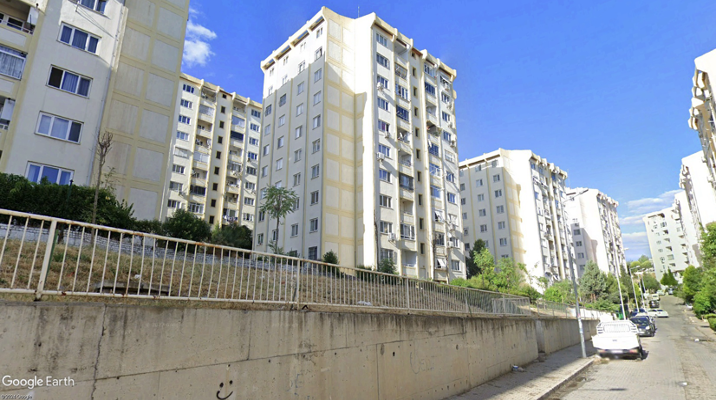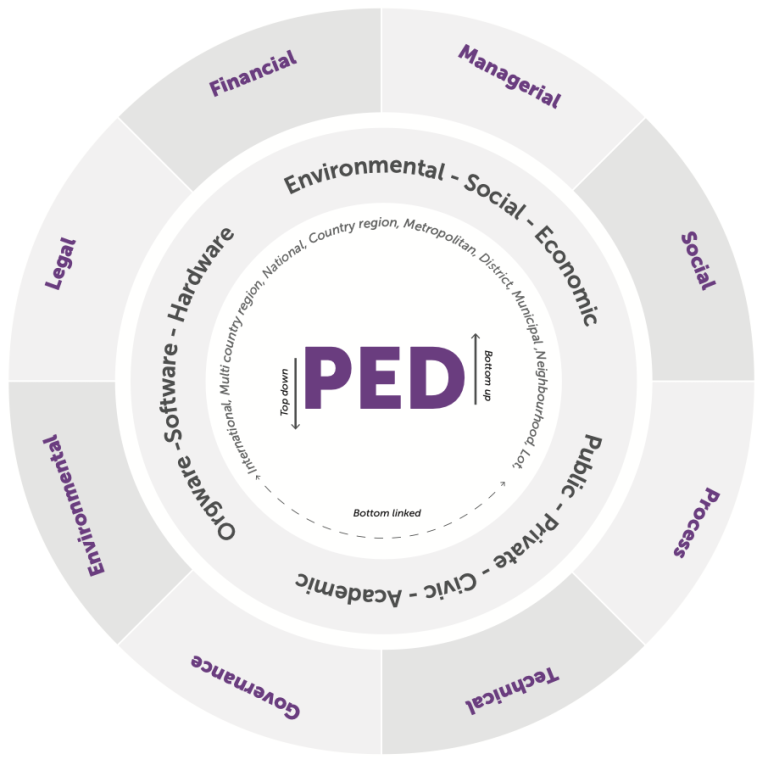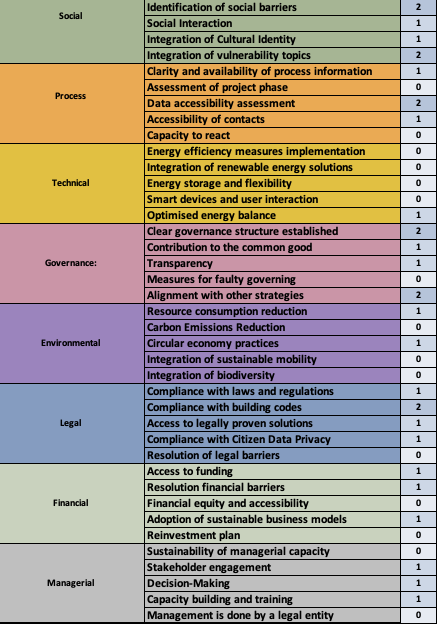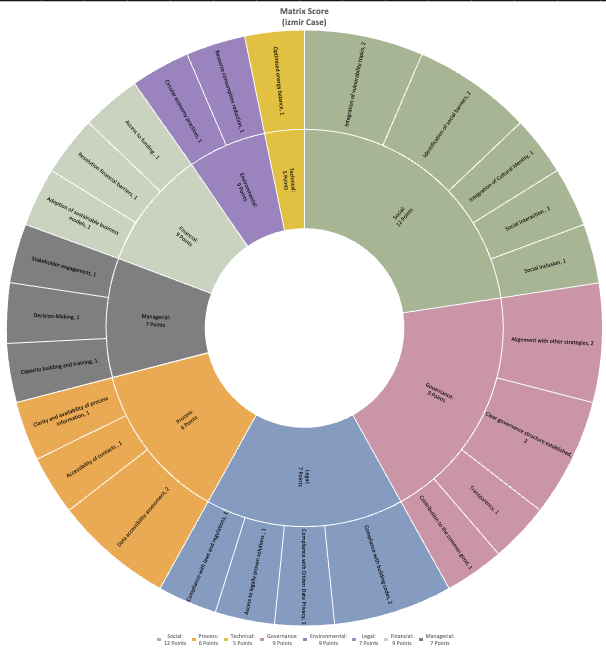
Note: This page provides a shortened summary of the extensive case study, which includes the research, the simulation and Matrix scoring results, as well as recommendations. For the whole 30 page document, simply click here and download as a .pdf file.
Introduction
The growing concerns about climate change have led Türkiye to take governmental action, as it is considered one of the countries unfavorably affected by climate change; thus, it is listed among high-risk countries. In Türkiye, the Ministry of Environment and Urbanization was renamed the Ministry of Environment, Urbanization, and Climate Change on October 29, 2021, to further address the issue of climate change at the governmental level. A ground example is the signing of the Paris Agreement in 2016. In accordance with the terms of the agreement, Türkiye aims to decrease its greenhouse gas (GHG) emissions by 21% by 2030 and reach net zero by 2053.
The Zübeyde Hanım District in Karşıyaka, İzmir consists of high-rise residential buildings.
The buildings on the site have a variety of orientations and feature reinforced concrete structures with hipped and tile-covered roofs. Initially designed with a central solid fuel boiler-radiator heating system, they were later converted to individual natural gas boilers, with cooling provided by individual split air conditioning systems in only some of the apartment units. The area is in close proximity to a nearby solar PV power plant, which produces about 1200 MWh per year according to the Karşıyaka Municipality. The PV plant is owned by the municipality, making it suitable for a potential virtual PED study.
According to a study conducted by Karşıyaka Municipality to enhance urban resilience, the case study area is among the regions with the highest urban heat island effect and is one of the most vulnerable areas in terms of social fragility and access to public services. In this context, it is considered a priority risk area within the framework of access to services and adaptation to climate change.
The building energy models were developed based on the data collected regarding the buildings and the surroundings. Different scenarios were developed and evaluated, and they were assessed based on the electrical and heating/cooling energy use of the buildings, and the ratio of the load met by the renewable energy generation through photovoltaic (PV) systems.
2. Methodology of Research
The methodology included evaluating the existing building blocks’ thermal and electrical energy consumption, calibrating the models with actual consumption data and increasing energy efficiency through envelope retrofitting applications, integrating renewable energy sources, and ultimately analyzing the potential for a PED transition in the district. Initially, a base model (Vbase) was developed using the existing building documents. This model was then calibrated with utility bills and the Actual Meteorological Year (AMY) weather data to produce an accurate base model Vbase (Calibrated). Following, three consecutive scenarios were developed and evaluated. The first scenario (VER) focused on an envelope retrofit to reduce heating and cooling loads. The second scenario (VER,HP) integrated a heat pump into the previous VER model, converting thermal loads into electrical loads. Finally, the third scenario (VER,HP,PV) incorporated PV panels for renewable energy generation, with outputs that provided potentials of the generated renewable energy. Upon the consecutive application of these steps, an overall evaluation of the potential for becoming a PED was aimed in this study.

To synthesize the qualitative and quantitative data, a Positive Energy District (PED) matrix was developed. The matrix allowed for the systematic evaluation of the current situation and areas for improvement across multiple dimensions, such as energy performance, governance, and community engagement. This structured analysis facilitated the identification of potential synergies and challenges, offering insights into pathways for optimization.
Assessment of the case based on the PED Matrix criteria
The project was assessed across eight key aspects—Social, Process, Technical, Governance, Environmental, Legal, Financial, and Managerial—revealing strengths and identifying areas for improvement to support a well-rounded PED strategy.


Overview of key scoring aspects
Managerial Aspects
The managerial framework of the case reveals both opportunities and gaps. As it stands, the energy community has no mechanisms for sustaining managerial capacity.
It also exhibits limited awareness among stakeholders. There is a possibility to engage more stakeholders and need to develop further collaboration, however, the awareness is still initiated only by project partners.
Likewise, the project has limited clarity on decision-making. The decision-making processes in Karşıyaka are limited, with low alignment and compliance with social values. In terms of capacity building and training, there are minimal efforts from the municipalities for capacity building. They have been providing training for certain key issues however.
Social Aspects
Stakeholder engagement is minimal, with only a few groups represented. There are significant barriers preventing participation from diverse community members, leading to a lack of varied perspectives in the decision-making process. Communication about the PED process is inadequate.
Some social barriers have been identified within the context of the PED, including issues related to trust, communication, or inclusivity. However, the assessment may not encompass the full range of barriers affecting diverse community members. While there are efforts to address these barriers, they may be insufficient to facilitate meaningful participation in the PED process.
There are minimal efforts to promote social interaction within the pilot. Some activities may exist, but they lack broad participation. Community members exhibit limited awareness of each other and the initiatives, leading to a low level of collaboration and engagement.
Some recognition of cultural heritage exists within the pilot, but efforts are minimal. There may be isolated instances where local identity is acknowledged, but they lack systematic integration into project planning or implementation. The community’s heritage is not adequately addressed and/or actively promoted in the energy initiative. The pilot is recognized as a part of a vulnerable community with certain needs.
The Process
The project has limited clarity and accessibility. Basic information is provided but lacks clarity or detail. The project info may be present, but comprehensiveness (descriptions, visuals like maps, photos) are missing or poorly categorized, making it difficult for stakeholders to grasp the context and relevance of the pilot project. Implementations have only been passed on verbally to site management, local administration, and some community members.
The phases of the project have not fully been identified. Data accessibility is limited. Some data is accessible through project dissemination channels such as website and social media accounts. However, not all data can be easily obtained because of their nature of being research papers and limited accessibility.
Accessibility is poor. Key contacts are given, but difficult to reach due to the hierarchial nature of operations e.g. in academia and municipalities. The case has no capacity to react flexible in unforeseen situations
Technical Aspects
Energy efficiency implementation is lacking. All of the buildings in the pilot area are very old buildings and have very low efficiency.
No renewable energy solutions are integrated specifically in the area, however, there is a solar PV farm of the municipality that produces renewable energy for the whole neighborhood. No storage or flexibility solutions implemented for this area. Likewise, no smart devices have been implemented in the area. In terms of optimized energy balance, the project displays poor coverage of energy needs. The local production yet covers a rather small part of local energy needs.
Governance Aspects
The pilot developed a governance structure with defined responsibilities, decision mechanisms and communication pathways only for local governments, but not connected with the central government.
In terms of contribution to the common good, there are minimal interactions with the citizens, e.g. the municipality has done two workshops with different stakeholders but the influence was rather low. When it comes to transparency, stakeholders have little access to information regarding governance processes that have been influential for this pilot area. The decision-making processes are often closed and not easily accessible. No evaluation criteria has been defined for governance.
This project aligns with the goals of municipal and regional decisions that have been directed towards sustainability and resilience. The local government’s endeavours of “Net-Zero Cities” and “SECAP” aligns with PED initiatives.
Environmental Aspects
The buildings on the site have gone under evaluation for national certification for energy efficiency identification for buildings recently, circa 2010. But, the reduction of consumption was not triggered any further. No efforts made to reduce carbon emissions. In terms of circular economy practices, minimal efforts are being carried out throughout the district to collect paper, plastic, textile and glass wastes. Likewise, both sustainable mobility as well as biodiversity has not been integrated in the pilots actions.
Legal Aspects
The case is considered to have poor alignment with compliance to laws and regulations. According to the municipality’s green estate management plan, there is a policy to develop cooperation with estate administrations. The legal framework for the energy communities e.g. trading and storing energy is somehow possible, but depends fully on decisions of energy providers and can change quickly.
The case has moderate alignment regarding compliance with building codes and land-use regulations. Due to the lack of decision-making in the implementation details, there is a more flexible implementation.
The case has poor access to legally proven solutions. There is no specific process design for the audit and approval of energy-related practices. Therefore, it is not cost-effective as the process continues with private sector support.
By the Turkish law, numbered 6698 “personal data protection law”, the citizens’ data is secured by law and municipalities are obliged to follow these restrictions.
Financial Aspects
There are low funding possibilities due to the project’s high demand of finances because of its scale and the complexity of the energy transition.
The pilot case has limited funding with high dependency on incentives, which poses ristks to project sustainability. Incentives and funding by local and central governments are still insufficient.
The case gives no consideration for financial equity. The study area is a region where building quality should be improved through urban transformation. There are no initiatives to support low-income residents in this regard.
The pilot exhibits a limited business model. Limited business model somehow brushing on the premises of sustainability. Limited effectiveness, with untested strategies that pose a risk to financial sustainability.

